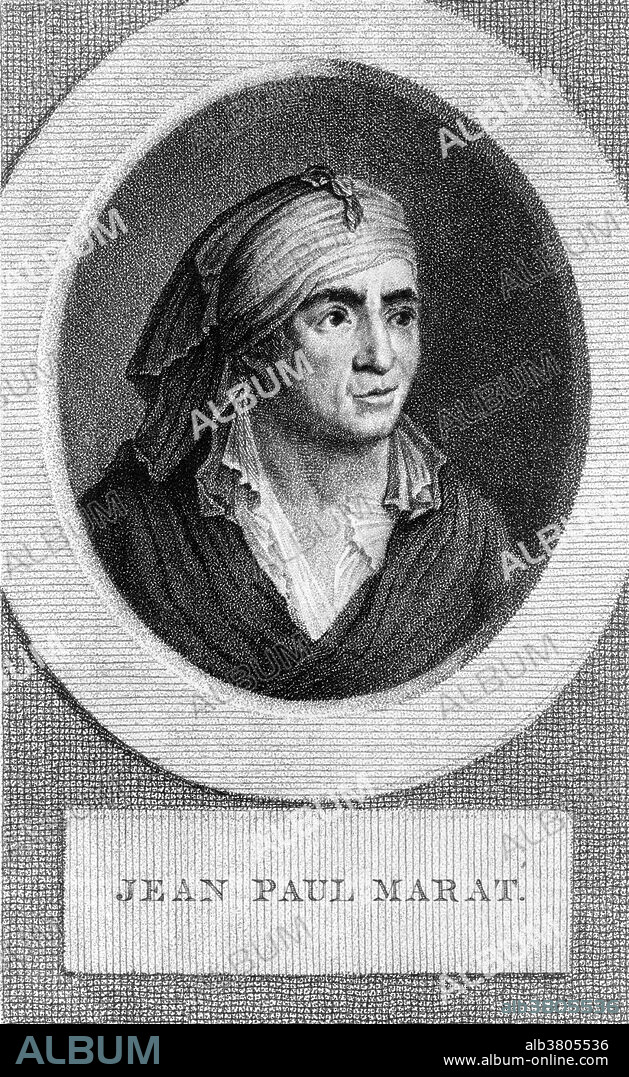alb3805536
Jean-Paul Marat, French Revolutionist

|
Zu einem anderen Lightbox hinzufügen |
|
Zu einem anderen Lightbox hinzufügen |



Haben Sie bereits ein Konto? Anmelden
Sie haben kein Konto? Registrieren
Dieses Bild kaufen

Titel:
Jean-Paul Marat, French Revolutionist
Untertitel:
Siehe automatische Übersetzung
Jean-Paul Marat (May 24, 1743 - July 13, 1793) was a physician, political theorist and scientist best known for his career in France as a radical journalist and politician during the French Revolution. As a physician he maintained a lucrative private practice, he received an annual stipend as physician in the household of the comte d'Artois, brother of Louis XVI, who would in 1824 ascend to the throne as Charles X. His transition from physician to physicist in 1783 occurred quite naturally: his work on the diseases of the eye stimulated an interest in optics, and his interest in electrotherapy brought him to study electricity. But, on the eve of the French Revolution, he placed his career as a scientist and doctor behind him and took up his pen on behalf of the of the lower class. He broadcast his views through public speaking, essay writing and newspaper journalism. His radical denunciations of counter-revolutionaries supported much of the violence that occurred during the wartime phases of the French Revolution and his constant persecution of enemies of the people, brought him the trust of the populace and made him their unofficial link to the radical Jacobin group that came to power. In 1793 he was murdered in his bathtub by Charlotte Corday, a Girondist sympathizer. She plunged a kitchen knife into his chest, where it pierced just under his right clavicle, opening the carotid artery, close to the heart. The massive bleeding was fatal within seconds. He was 50 years old.
Persönlichkeiten:
Bildnachweis:
Album / Science Source / LOC/Photo Researchers
Freigaben (Releases):
Model: Nein - Eigentum: Nein
Rechtefragen?
Rechtefragen?
Bildgröße:
3000 x 4886 px | 41.9 MB
Druckgröße:
25.4 x 41.4 cm | 10.0 x 16.3 in (300 dpi)
Schlüsselwörter:
18. JAHRHUNDERT • 18. JH. • BERÜHMT • BERÜHMTE PERSÖNLICHKEIT • FRANZOESISCHE REVOLUTION (1789-99) • FRANZOESISCHE REVOLUTION • FRANZÖSISCHE REVOLUTION (1789-99) • ILLUSTRATION • ILLUSTRATIONS • JAKOBINER • JEAN-PAUL MARAT • MANN • NATURWISSENSCHAFTLER • NOTABEL • PERSON • PERSöNLICHKEITEN • PERSÖNLICHKEITEN • PORTRAIT • PROMINENZ • REVOLUTION 1789 • REVOLUTIONAER • REVOLUTIONÄR • WISSENSCHAFTLER • WISSENSCHAFTLICH
 Pinterest
Pinterest Twitter
Twitter Facebook
Facebook Link kopieren
Link kopieren Email
Email
